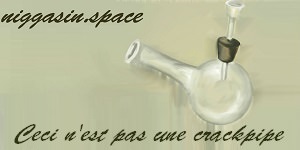I've acid-washed one of my knives in the past but it didn't turn out as well as I'd liked - I assume the acid I mixed wasn't quite potent enough, so the blade came out a bit dull. I was somewhat disappointed and hadn't tried again since.
That was up until I saw the detailed patterns you can get with PCB transfer film - examples:


so I decided to give it a try again.
First thing to do is get some transfer film - it's fairly expensive, so if you want to nigger-rig it some people have been able to use glossy photo paper. I suspect that if you go this route, you'll need to use different temperature settings when transferring the pattern to the metal.
The idea behind transfer paper is you print a design on it, then you press it face down on your metal surface (blade in this case), and use heat and pressure to transfer the ink from the paper to the metal. Then, when it's exposed to acid, the ink resists it - metal not covered by ink is corroded, metal covered by ink is left untarnished.
I didn't take photos of the transfer paper because I printed it ages ago, but the brand is Press n Peel Blue and it'll look like this once printed:

The difficult part is getting the patterns to transfer evenly - you need both heat (I found about 150 degrees celsius to be ideal) and constant, even pressure. I've tried this in the past with an iron, a vice and blowtorch, even a convection oven but never had much luck. This time around, I built the DANGERWAND.

It's basically just a hair-straightener mounted on a vice so I can use it as a heat press. Works well, but is actually pretty dangerous - I had to tape over the circuit on the top, touching it gives a very nasty shock.

I would've actually used this as the pattern, but being a total fucking mongolroy I applied the pattern upside down. Clean off the pattern with acetone, re-press, this is the result:

NOTE: I intentionally faded the pattern to the right to avoid a hard cutoff. I also used nail polish to paint parts of the blade that I didn't want to be exposed to the acid, ie. the ring around where the pivot goes, because if you corrode the parts that make contact with other components, you will fuck up the tolerances and best case, the knife will be loose and off-centre, worst case it won't open or lock up properly.
Next up is the acid dip. I used 6% sodium hydroxide and hardware-store grade hydrochloric acid in a ratio of 2.5:1 in an OAK milk bottle with the top cut off. If youre going to do this, you MUST use either a GLASS or HDPE plastic container. The acid is strong enough that it'll rapidly corrode and weaken a metal container, and most other plastics will melt in a matter of minutes. No photos, I was afraid that I'd acid-damage my phone.
Basically I mixed the acid, put a cabletie through the hole in the blade and hung it off a metal bar on the lip of the container - that way the blade was suspended in acid. It only took like 5 minutes for it to seriously corrode, then I took it out and washed it and rubbed a bit of making soda across it to ensure the acid was totally neutralised. After washing, I used a small amount of acetone to remove the nail polish and the resist pattern that I'd applied to the metal - this is the end result:

After putting it all back together:


I don't intend on doing this again anytime soon, the acid is VERY messy and releases a lot of unpleasant fumes, plus it's annoying to dispose of. Generally you've got to slowly add a base (bicarbonate/baking soda) until it's neutralised, then it's safe to flush.
PS. the knife in question is a Spyderco Manix.
----wat is going on here, formatting's messed up
Post last edited by aldra at 2017-03-03T02:02:52.624725+00:00













